What organic fertilizers include - types and characteristics
Despite the abundance of plant care chemicals, more and more gardeners are turning to natural remedies. Organic fertilizers are considered safe for plants, humans and the environment, however, they have their own characteristics of composition and use that must be taken into account.
Types of organic fertilizers
The name speaks for itself: these products are based on natural raw materials, plant residues or animal waste products. Features of fertilizers determine the substances of which they are composed, use the following types:
- bird droppings;
- manure;
- compost;
- high and low peat;
- ash.
Each variety contains a set of nutrients necessary for plants, the main components are nitrogen, phosphorus, potassium. Working closely together, they improve planting and soil conditions. Organic fertilizers differ among themselves in the number of available compounds and the method of application. To get benefits, it is important to know what organic matter consists of and how it affects plants.
Table 1. The presence of macronutrients in organic fertilizers
| Name | Macronutrient content,% | |||
| N - nitrogen | P - phosphorus | K - potassium | Total | |
| Rotten manure (humus) | 0,96 | 0,57 | 0,9 | 2,46 |
| Bird droppings | 0,7—2,4 | 0,5—2,2 | 0,4—2,2 | 1,6—6,8 |
| Compost | 0,3—0,5 | 0,2-0,4 | 0,3—0,6 | 0,8—1,5 |
| Dry leaves | 1—1,2 | 0,1—0,2 | 0,1—0,2 | 1,2—1,6 |
| Peat, dry matter | 0,8—3,3 | 0,06—0,2 | 0,1—0,15 | 1—3,65 |
| Note. The table shows the average values for each fertilizer. | ||||
Brief characteristics of the main batteries, application features
Nitrogen:
- It activates plant growth, especially green mass.
- Most of all is required in spring and in the first half of summer, when shoots form and young leaves appear.
- In the middle of summer, its introduction is minimized or canceled altogether. The vegetative program redirects sap flow to strengthen the stems and form fruit. If you continue to fertilize with nitrogen, the shoots of this year will continue to grow and will not gain strength until winter. And, therefore, they will not survive the frost.
- An excess in the soil leads to intensive reproduction of fungal pathogens. Soil microflora actively develops in the presence of nitrogen, which leads to plant disease.
Phosphorus:
- Without it, photosynthesis is impossible - the production of chlorophyll.
- Affects the size and brightness of flowers.
- Forms starch, sucrose, glucose, substances responsible for the quality of fruits and storage in winter.
- Provides the appearance of young roots, therefore, is introduced at planting.
- Seasonal use is spring, autumn.
Potassium:
- Strengthens plant tissues, protects the cell membrane. Due to this, moisture is retained in the stems and leaves. That is why the element is needed during all growing seasons, especially in spring and summer, during the formation of fruits.
- Potassium is a therapeutic and prophylactic agent for fungal diseases. Under the action of potassium, a strong shell is formed that does not allow harmful pathogens to penetrate inside.
In addition to the main components, organic matter contains calcium, magnesium, iron and trace elements.
Subtleties of application
Natural dressings are valuable because they slowly dissolve in the soil and provide long-term nutrition. For example, if you put organic matter into a hole when planting a tree, then the next addition will be needed in 2-3 years.
The following methods of introduction are used:
- root top dressing, when fertilizers are loosened with soil;
- foliar spraying, in which a weak solution is sprayed onto the leaves and stems;
- mulching with dry substances, which belong to the MLU (slow-acting fertilizers) - more often than others, peat is used in this way.
Advice
Overripe fertilizers are applied to the soil in a solid state; liquid infusions are prepared from fresh raw materials.
Manure
Waste products of animals that eat plant foods - cows, horses, sheep, rabbits. Manure contains essential nutrients for plants and microflora, which forms humus in the soil.
Application features:
- Fresh is used only for preliminary preparation of empty soil, exclusively in late autumn. During the winter, manure turns into valuable humus. Application rate 4-6 kg / m2.
- In the spring, rotted manure is scattered in the garden and on the beds in a dry form - 3-4 kg / m2, two weeks before landing.
- For current dressings, a solution of fresh substance with water is prepared in a ratio of 1:15, kept for 7-10 days, the soil is watered at the rate of 0.5-1 l / m2... The infusion is distributed at a distance of 10-15 cm from the stems, so as not to burn the plants, as evenly as possible and only after abundant watering.
Bird droppings
Received from the excrement of domestic chickens, geese, ducks, turkeys, pigeons, quails. Poultry droppings contain the largest amount of nitrogen, but after 2-3 months of storage they lose half of the substance, since it quickly evaporates. The best manufacturers use a fast drying method that maximizes the benefits.
To prepare liquid feeding, take 1 kg of poultry droppings per 200 liters of water (or 50 g per 10 liters) and infuse for a week, stirring daily. The fertilizer is filtered before use. This recipe is recommended by the specialists of the Botanical Garden of the Russian Academy of Sciences in St. Petersburg.
Application features:
- The amount of application depends on the culture and its age. Young plants are watered after complete survival, when two or three true leaves are formed.
- Bird droppings are categorically not suitable for seedlings. The active nitrogen causes the growth of the terrestrial parts, and the seedlings must first form roots. For the same reason, it is not used for vegetative propagation by layering and cuttings.
- In autumn, empty beds are fertilized with fresh dung. During the winter, oxidation, fermentation, rotting with the release of heat occurs. In the upper layers of the soil, humus forms, ready for feeding the plants. Then fertilization is not necessary in the spring.
The recommended volume of application of liquid and dry poultry manure for various crops and the frequency of feeding are shown in the table below. In dry form, fertilizer is distributed to the beds in the fall.
Table 2. Features of the use of poultry manure
| Garden culture | The amount of feeding | ||
| Dry matter, kg / m2 | Liquid infusion, l / m2 | ||
| with bedding | in pure form | ||
| Potatoes | 4—6 | 3—4 | Do not apply |
| Dr. roots | 3 —4 | 1,5—2 | Do not apply |
| Tomatoes, cucumbers and melons | 6—8 | 3—4 | 3—4 |
| White cabbage | 2,5—3 | 2 | 1 - for each head of cabbage. Three times from May to August. |
| Onions, garlic | 3—3,5 | 2 | 1.3-4 times over the summer |
| Dill, parsley and other greens | 2—2,5 | 1,5—2 | Do not apply |
Bird droppings are used for foliar feeding more often than other fertilizers. The work is carried out according to the following scheme:
- The infusion is thoroughly filtered.
- Diluted with water in a ratio of 1: 4.
- Sprinkle plants, wash off dust from leaves and stems. Wait until the plant dries out, otherwise the fertilizer will drain from the wet surface.
- The solution is applied using a fine spray.
Advice
Top dressing is best done in the evening. Morning dew will not allow fertilizers to linger on the leaves. The scorching sun will cause burns at noon.
Peat
Fossil formed naturally from plant residues. In horticulture, several types are used, the most applicable are high and low peat. They differ in origin, degree of decomposition, composition.
Lowland peat is a homogeneous mass of brown or anthracite color. Includes many beneficial substances. The main function as fertilizer is soil structuring. Add to the plant mixture for aeration and moisture capacity.
The universal action manifests itself on all soils that require transformation.Retains moisture on sandy soils, loosens compaction on clay types. The acidity of the substance is close to a neutral reaction, it ranges from 5 to 7 units. It has no particular effect on the soil. The recommended dose is 3-4 kg / m2.
Low-lying peat is a popular material for mulching and sheltering plants for the winter. For example, they are covered with roses and young fruit trees, forming a cone. In the spring, the protection must be opened and mixed evenly with the ground.
High moor peat looks like a loose mixture of poorly decomposed residues. Has a high acidity - pH 3-4.5. The mineral salts that are part of the composition are not available to plants. In this regard, high-moor peat is used as an additive to compost or is introduced into the soil before winter for roasting. 5-6 months should pass between feeding and planting. The peat is evenly distributed in a thin layer using garden spreader... This method speeds up the decomposition of the fertilizer.
Important
You can not use high-moor peat in its pure form for fertilizing plantings. When decomposed, carbon dioxide is formed, which is harmful to plants.
Ash
In gardening, the following types are in demand:
- coal non-combustible residues;
- wood ash;
- burnt leaves.
Coal ash does not contain nutrients, but it is an effective baking powder on heavy soils.
The most useful is wood ash - a substance rich in phosphorus, potassium, calcium and trace elements. Loosens the soil, neutralizes acidity. Promotes the formation and strengthening of the root system of plants. The maximum amount of nutrients is contained in ashes from birch firewood. Application rate - 700 g / m2 (if there are no scales at home, use the measurements at hand - see their ratio to weight below).
Volumetric folk measurements in grams:
- 1 tablespoon - 6 g;
- 1 glass - 100 g;
- can of 1 l - 500 g.
When planting, wood ash is brought in for rooting. In autumn - to strengthen the root system, which ensures frost resistance. The ash solution is applied to the leaves and stems for potash feeding and tissue strengthening, which serves to prevent damage by the moth, sawfly, mites and other pests. For cooking, you need 3 tbsp. spoons of raw materials for 1 liter of water. The mixture is kept for 7 to 10 days, stirring daily. Solid laundry soap is used as a sticky substance - ¼ of a piece. The negative side is that it washes off in the rain, so the spraying sessions are periodically repeated.
Ash obtained from burning leaves, branches, grass has a different composition. Many useful elements contain ashes from sunflower stalks, buckwheat, dry cereals. It is used in the same way as woody.
Compost
Organic fertilizers, except for peat, theoretically, you can make yourself. However, even in the countryside, organic matter is usually bought: household harvesting often lacks volume, moreover, it is difficult to follow all the technologies to obtain maximum fertilization efficiency. But there is no need to purchase compost: it consists of rotted remains of plants, which are on every site and in any suburban driveway.
Cut grass, fallen leaves, weeds that have been cut down (by destroying the seed pods) do not need to be thrown away. Better to put in a pit or a special box for overheating. A valuable fertilizer is formed in 5 - 6 months. Thus, garden plant debris provides tremendous benefits:
- plant nutrients;
- saving the budget;
- safety of the environment.
In addition to plants, food waste is placed in the compost, with the exception of meat waste, which have a long decomposition period, which is not combined with the period of overheating of herbaceous plants.
The transformation takes place more intensively if the raw materials are laid in layers, sprinkled with soil or high-moor peat and EM preparations are added, for example, "Emochki Bokashi" or "Baikal EM-1". The effective microorganisms that make up the products accelerate fermentation and decomposition at times.For example, ordinary compost takes six months to form. With the use of EM drugs - in 2-3 months.
To get the most out of your home fertilizer, you shouldn't compost:
- plants affected by diseases and pests, since the source of infection is safely stored in the organic mass and even actively reproduces;
- waste products of dogs and cats, which may contain dangerous viruses transmitted to humans from the soil, for example, the causative agent of toxoplasmosis;
- tree leaves containing tannins - walnut, oak, hornbeam, poplar. When tannins enter the ground, they inhibit the development of plants (therefore, nothing grows under the crown of a walnut).
The prepared compost is used in the same way as grassland peat, scattering it on the ground, and then embedded in the top layer to a depth of 5-10 cm. The work is performed after harvesting the fallen leaves in October.
Fruit trees are fed by distributing fertilizer around the periphery of the trunk circle. The ideal diameter is equal to the size of the crown; it is at this level of the root system that the hairy processes are located, which absorb nutrients. This will maximize the benefits of compost.
In recent years, the number of supporters of ecological gardening methods has increased, which is impossible without organic fertilizers. Manufacturers provide those who wish with a wide range of natural feedings. If the purchased products seem expensive, you can always make available compost.
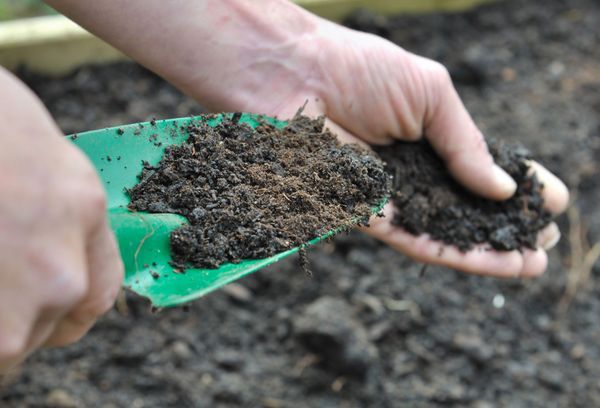
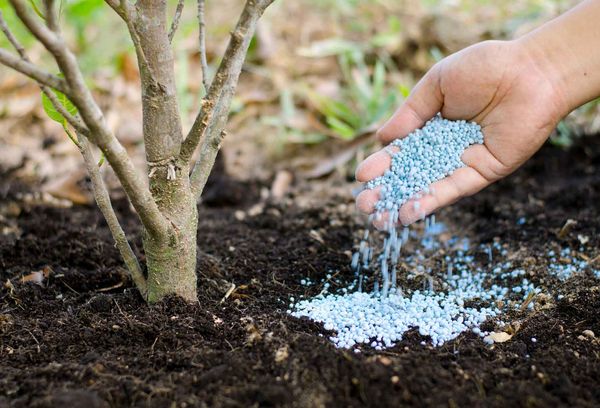
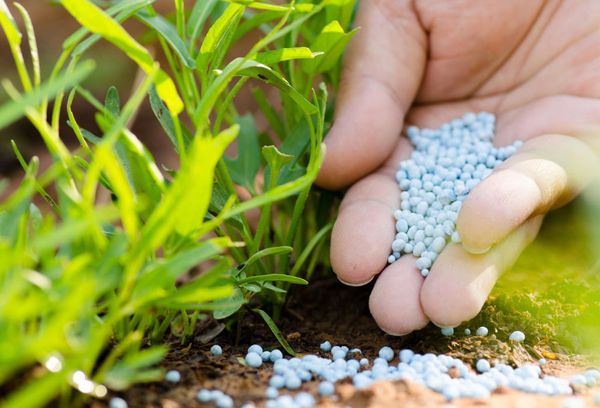
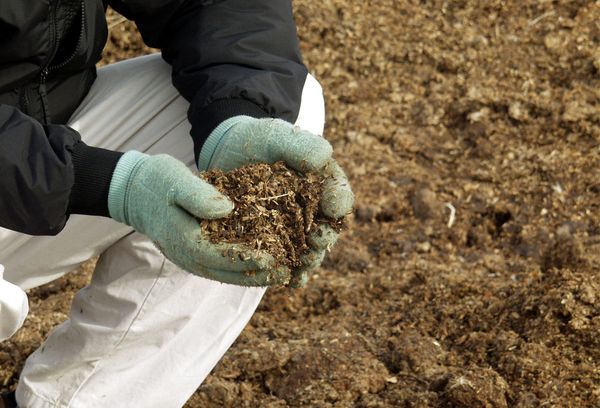
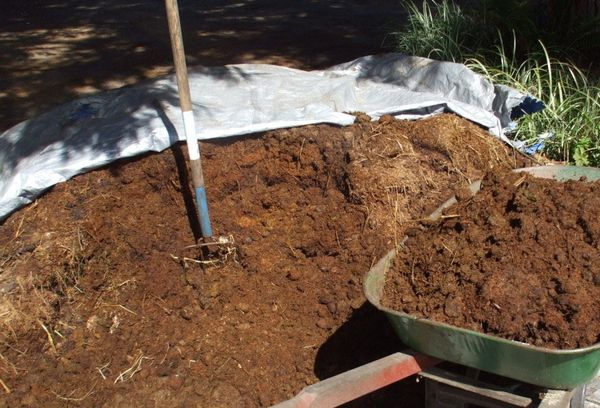
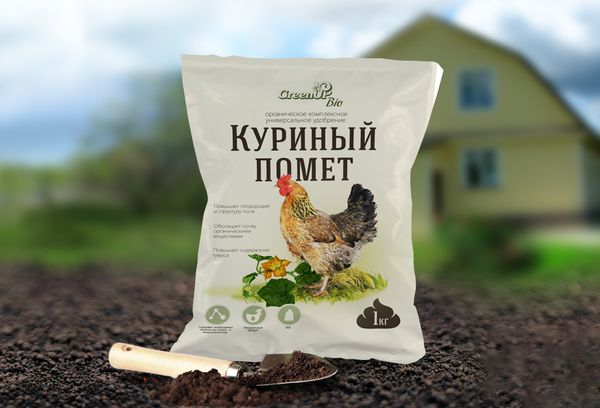
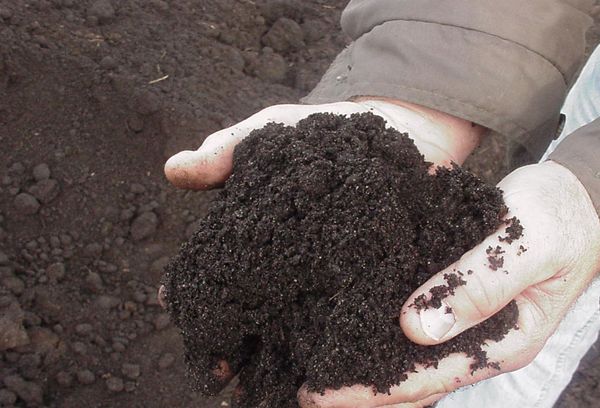
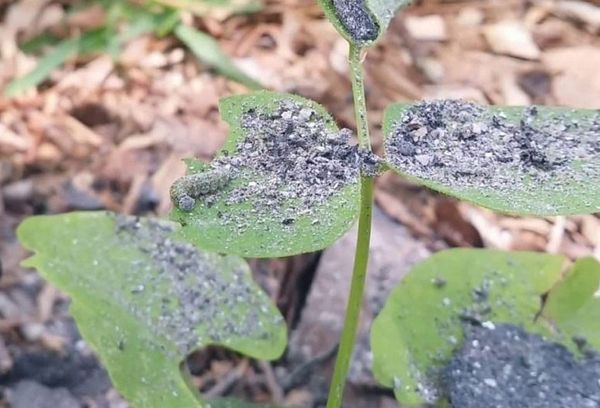
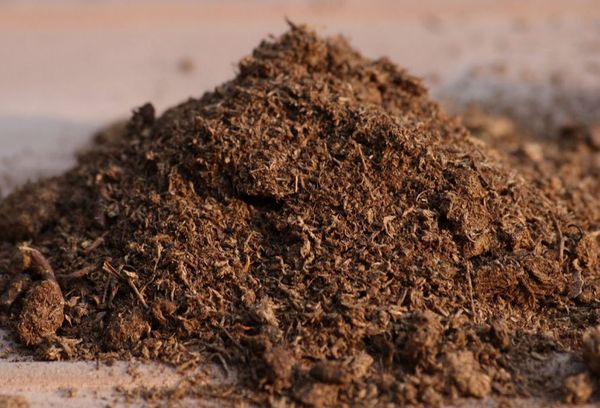
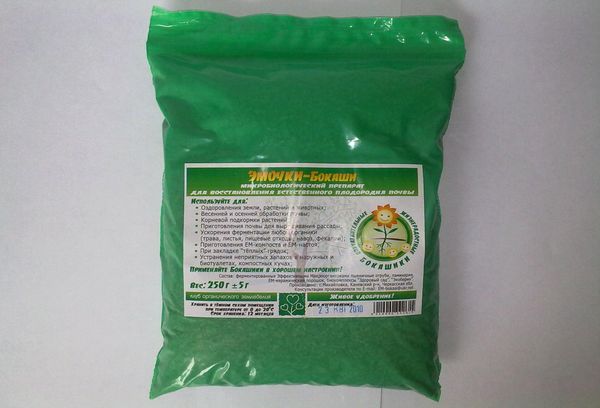
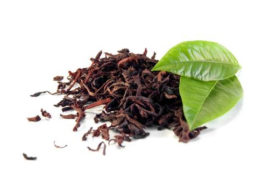
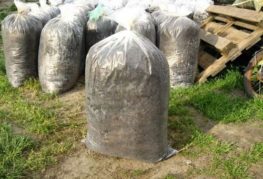
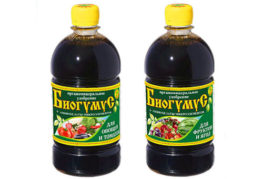
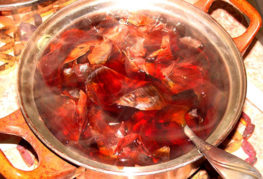
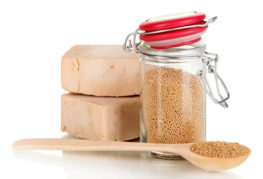
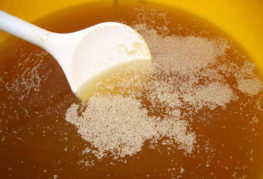
and will be published shortly.